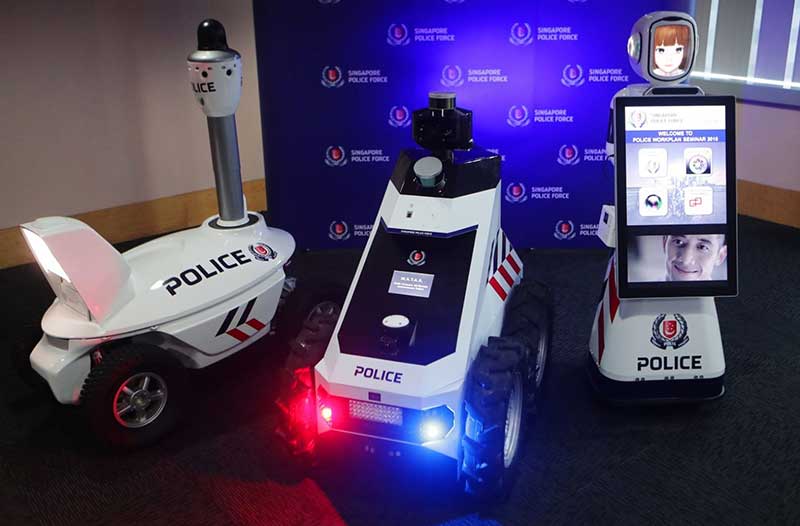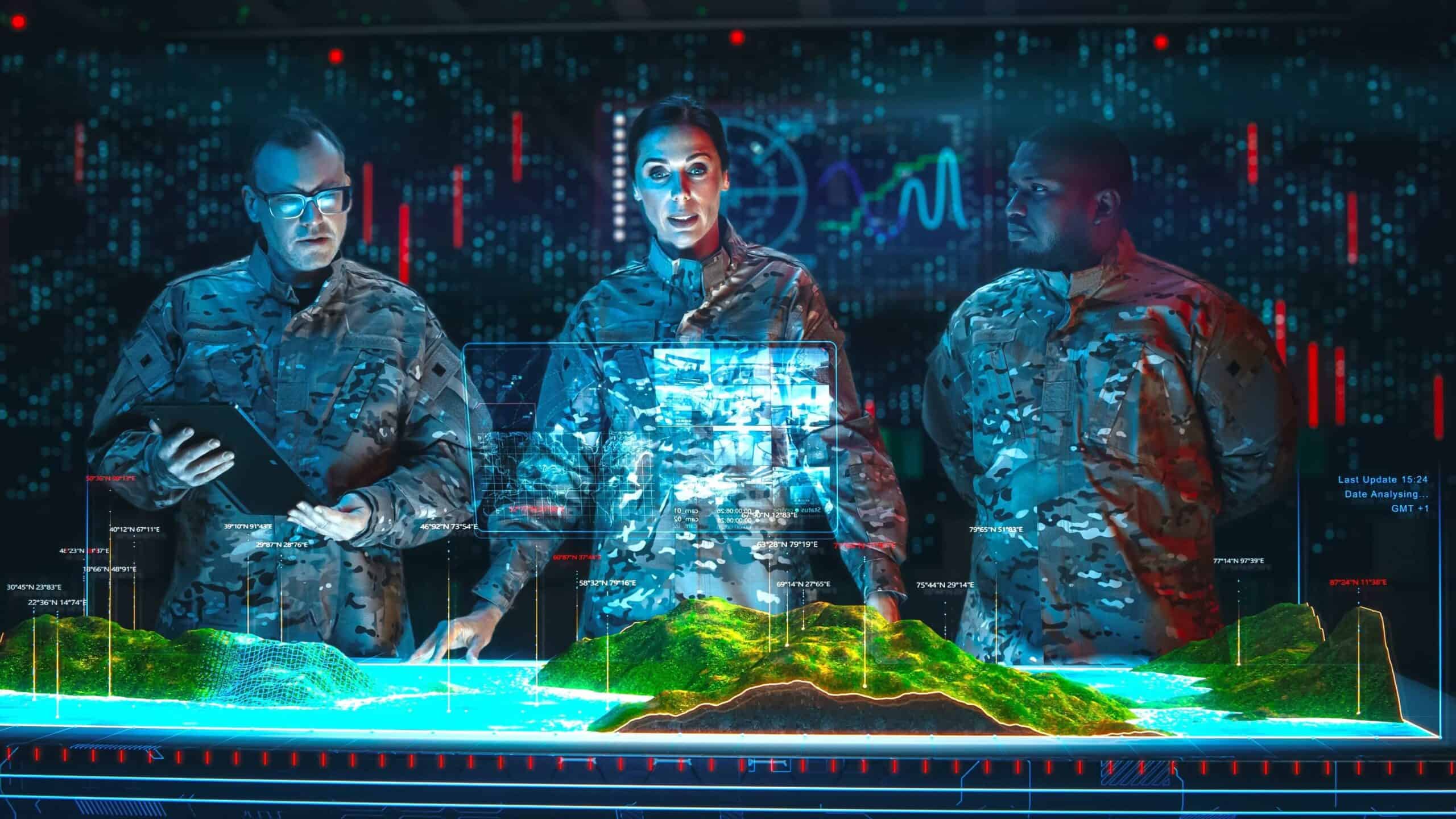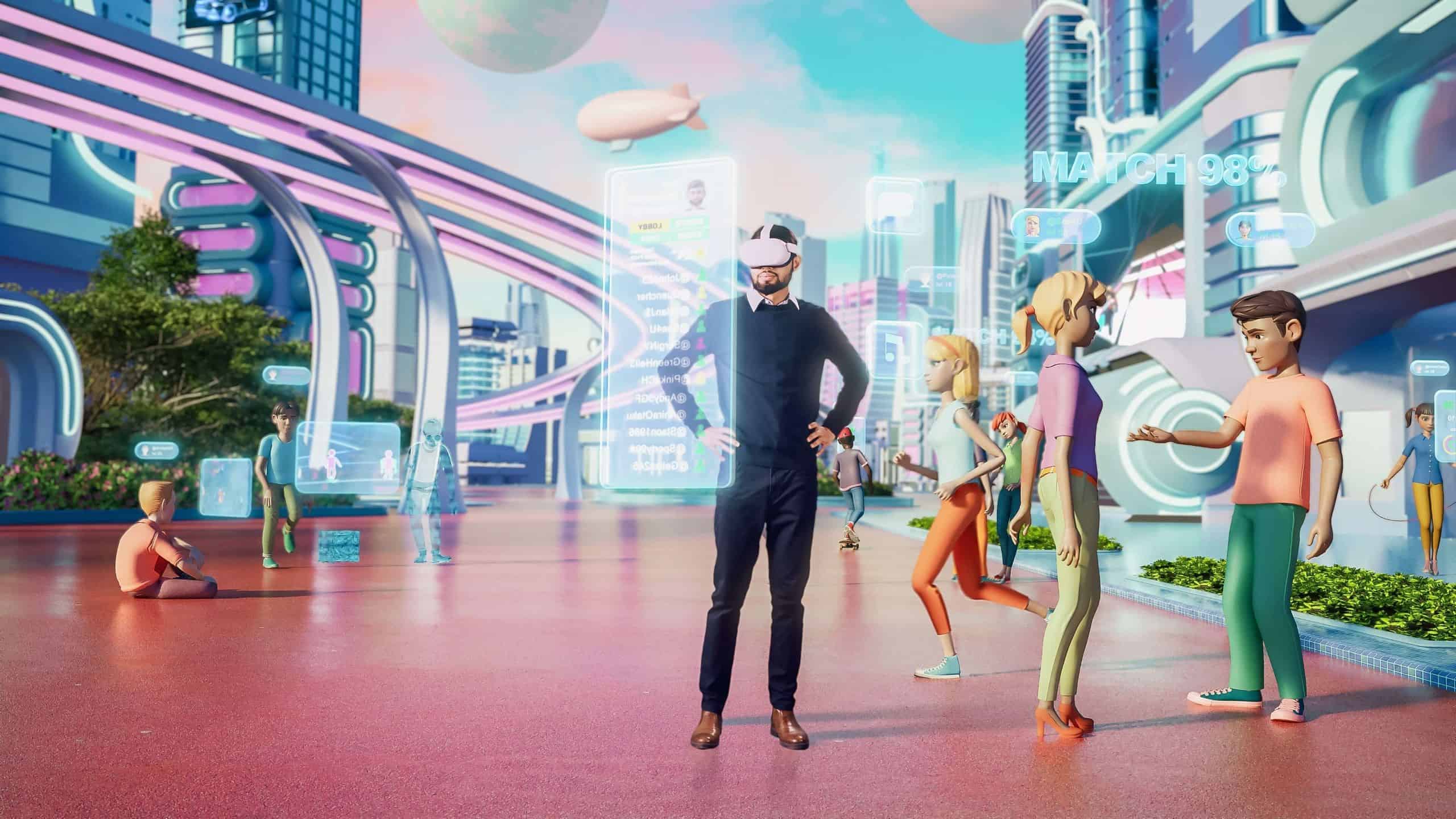- India’s very first robot police officer greets and guides visitors at Kerala Police Headquarters
- Autonomous robot detects suspicious activity in Singapore’s neighbourhoods
- California police used a robot in negotiations with a suspect
- This small robot found a suspect hiding underneath the floor
- Ford’s robo-car could take care of routine police work
- Is robot policing a good thing for our society?
- The future of police robots
The crime rate is rising in many parts of the world, and it’s becoming increasingly difficult for police to keep our cities safe. Consequently, governments have recognised the need for more powerful technology, such as robots, to fight crime and better serve their communities. Although the adoption of police robots is still a nascent trend, the industry is steadily growing. In fact, according to Technavio’s report published in 2017, the global security and law enforcement robots market will reach a value of $2.18 billion by 2021.

There’s a number of reasons why robots are an ideal solution for law enforcement, but the biggest one is safety. Day-to-day police work is filled with dangers, and we hear about police officers being killed in the line of duty all over the world almost on a regular basis. And with police work coming under increased scrutiny lately, perhaps the time has come to usher in the era of new superpower police, and some countries have already added advanced robotic solutions to their ranks.
India’s very first robot police officer greets and guides visitors at Kerala Police Headquarters
Earlier this year, India added a humanoid robot to the Kerala Police Headquarters. The robot, called KP-Bot, was developed by the Indian startup Asimov Robotics and the police research centre Cyberdome. Described as a female officer by the Police Assistant Deputy Manoj Abraham, the KP-Bot was created to work alongside humans, and it was granted the rank of sub-inspector. It’s battery-powered and can operate for eight hours on a single charge. The robot is stationed at the front desk in the police headquarters, where it receives visitors and directs them to the right department.

The robotic cop can interact with people verbally, it features relevant information on its screen, and it can even record visitors’ complaints. This innovation also has the ability to identify higher officials and greet them accordingly. There are also plans to equip the robot with explosion detection tech and special sensors to improve its efficiency and expand its applications to other tasks in the future, including traffic regulation and bomb disposal. While the introduction of the robot at the Kerala Police Headquarters is only a pilot project, if it proves successful, the authorities plan to introduce more police robots in the future.
Autonomous robot detects suspicious activity in Singapore’s neighbourhoods
The Singapore Police Force also got a robotic addition. First deployed to patrol the 2018 Chingay parade, and then in Suntec City during the 33rd ASEAN Summit held in November 2018, the robot was developed as a part of a project supported by the Ministry of Home Affairs (MHA). Also known as the outdoor robotics surveillance system (ORSS), this robotic solution is designed to complement the work of human police officers in charge of monitoring an area and looking for suspicious behaviour and activities, enabling the officers to focus their efforts on other, more critical tasks. The robot can move autonomously, and it’s capable of detecting obstacles and avoiding them without bumping into other objects or people in the area.

The ORSS is equipped with cameras, through which it captures a 360-degree view of the surrounding environment and then sends the data to the command post. Furthermore, it can also detect auditory anomalies such as screams, gunshots, and drones, and passersby can use its integrated intercom system to report suspicious activity in the area. In a media release, the Singapore Police Force (SPF) said that “This is a positive step in our efforts to build up our robotics assets that can be used in different aspects of policing such as security operations during major events, community engagement, and protective security.”
California police used a robot in negotiations with a suspect
In the US, police robots have already proved their usefulness in tense situations. In January 2019, police in California’s city of Novato arrested a man who attempted to set a gas station on fire. This wouldn’t seem so strange if the police didn’t use a robot during their negotiation with the suspect. After the 40-year-old man failed to set a gas station on fire, he escaped to another gas station nearby in his pickup truck. But the police quickly surrounded him, and after spotting what appeared to be the barrel of a rifle in his pickup, evacuated the area and called reinforcements. To start the negotiation process, someone was required to deliver a phone to the suspect. Since the police wasn’t sure whether the man was carrying a firearm, they didn’t want to risk and jeopardise the lives of officers, so they sent a small robot equipped with a smartphone to the suspect’s pickup truck.
After six hours of intense negotiations, the man was ready to surrender, but under one condition – he wanted a cigarette. Police officers were worried that the man had poured some gasoline on himself during his previous attempt to light up the gas pump, so they convinced him to accept a vape pen instead. The task of delivering the item to the suspect was once again assigned to the robot, and soon after, the man was arrested for “attempted arson and vandalism”.
This small robot found a suspect hiding underneath the floor
In February 2019, police officers in another US city, La Crosse, used a small robot named Throw-Bot to find a man who was hiding in a tight space underneath the floorboards of his home. Officers came to the suspect’s home, but the suspect’s roommate said that the man wasn’t home. After the police saw a shotgun on the table, the roommate admitted that he’s actually hiding underneath the floor. The space was around 90 centimetres tall, so it was extremely hard for the police to inspect it. Also, they weren’t sure exactly where the suspect was hiding, because the space was poorly lit, and it ran along the entire length of the house.
So, they sent the Throw-Bot, which is equipped with a camera, to inspect the area “without putting themselves in compromising positions”. Thanks to the robot’s camera, it didn’t take long for the police to locate the suspect, who was hiding at the end of the crawl space. The police then sent a K-9 named Zeus into the crawl space, after which the 23-year-old man exited the space and was arrested.
Ford’s robo-car could take care of routine police work
Traffic police also craves robotic automation. In 2018, Ford filed a patent to the US Patent and Trademark Office that describes a robot police car equipped with sensors, cameras, and artificial intelligence (AI). The vehicle would be able to communicate with other devices, such as stationary speed cameras, to detect the licence plates of vehicles that are breaking the law. What seems to be even more farfetched is that this robo-car would also be able to connect wirelessly to the vehicle of interest and notify the driver to slow down, or even issue a traffic ticket. Though some might fear job loss, the robo-car wouldn’t eliminate human police officers. Instead, it would just automate some routine and dull tasks, such as stopping a speeding vehicle or issuing a fine, allowing human officers to devote their attention to more pressing tasks.
Is robot policing a good thing for our society?
Innovations such as Ford’s robo-car could help to solve the growing shortage of police officers, which is particularly evident in Germany. High level of stress and bad pay are making this job unattractive to German job seekers. The lack of police officers has forced authorities to explore other recruitment methods, such as looking for candidates across state borders. According to Oliver Malchow, the federal chairman of Germany’s police union, Germany will need to hire 20,000 police officers by 2022.

But just like in every other sector, automation in law enforcement is surrounded by scepticism. As Val Demings, the former chief of the Orlando Police Department, explains, despite advances in technology, automation could never “replace the wisdom, courage, and compassion found in an officer’s heart and soul”. Candace Lightner, the founder of the non-profit organisation Mothers Against Drunk Driving, agrees. She says that solutions such as Ford’s patent, designed to recognise impaired driving by observing whether the car suddenly stops or changes lanes, could easily make a mistake. “What if I’m driving along and all of a sudden a dog runs out and I stop? I’m going to get pulled over by a police state vehicle that can’t see what’s going on? I don’t like it at all,” adds Lightner. Despite these opinions, robotics has its share of supporters. Julian Sanchez, a senior fellow at the Cato Institute, is one of them. He believes that implementing robots is a win-win for both police officers and citizens. For instance, police officers wouldn’t be exposed to potential dangers during routine traffic stops, while citizens would no longer fear police officers, who sometimes exceed their authority for no reason. Today, when police brutality and excessive use of force are often grabbing the headlines, robots may not be a bad solution, after all.
The future of police robots
Robots have crept into every industry, promising to improve performance and increase quality. This is exactly what the law enforcement sector needs. Police robots may have seemed unrealistic just a few years ago, but the fantasy is slowly becoming a reality. A robocop equipped with face recognition technology and AI could help police officers deal with critical situations. Of course, this doesn’t mean that the days when officers hide in the bushes or chase down criminals would be completely gone. In the not so distant future, robot police officers could become a standard part of police equipment. They could protect officers from dangers such as gunfire, or help the police track a suspect and gain access to their location. Robots could patrol the streets and immediately notify human co-workers when they detect suspicious behaviour. Since the crime rate is getting higher, the police need all the help they can get. In our fight against crime, any helping hand is welcome, even if it comes from a robot.







